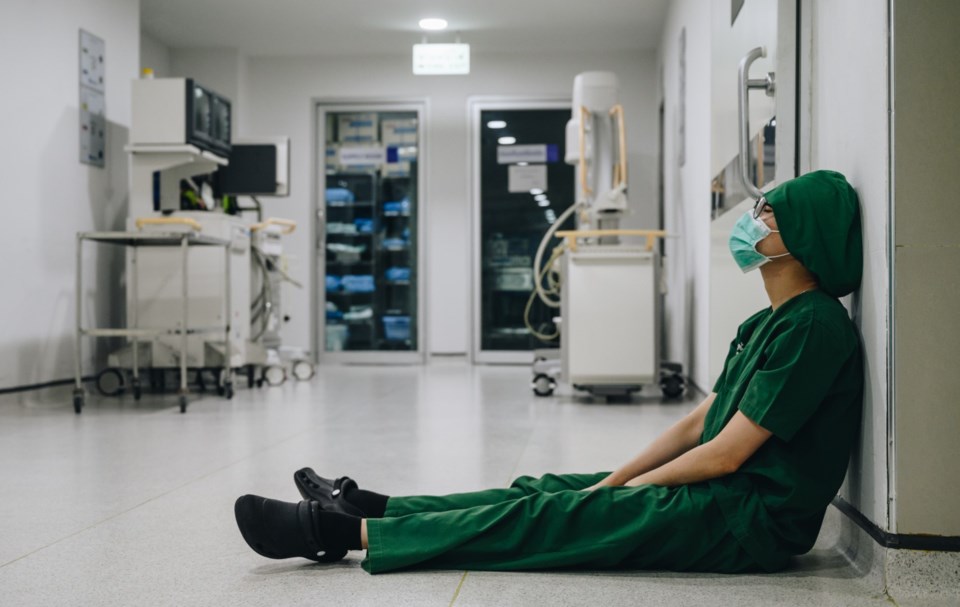We hear a lot about work-related burnout these days, especially as many workers continue to deal with fallout from the COVID-19 pandemic. Maybe it’s the blurring of lines between home and work life. Or maybe it’s the stress of returning to the workplace after working from home. Or the lingering symptoms of long COVID causing both physical and mental health challenges.
Quentin Durand-Moreau, an assistant professor of occupational medicine at the University of Alberta, has done extensive research on work-related burnout, as well as mental health problems like depression and PTSD. Here’s what he has to say about the often hidden workplace hazard, what’s behind it, and who is responsible for preventing it.
What is burnout?
According to Durand-Moreau, it’s a syndrome resulting from chronic workplace stress, characterized by three dimensions: feelings of depleted energy or exhaustion, increased mental distance from your job, such as feelings of negativity or cynicism, and feelings of reduced personal accomplishment at work.
“Burnout is not a medical diagnosis. I really think it’s just a word patients can use to indicate to their physician, their psychologist, their therapist, their healthcare provider, that they feel unwell with their mental health because of their work,” he says.
“From that starting point, the clinician needs to make a diagnosis – and in most cases, the diagnosis is going to be depression.”
In fact, Durand-Moreau says research indicates that burnout and depression overlap. “In other words, most cases of burnout meet the diagnostic criteria for depression.”
What causes burnout?
Durand-Moreau says excessive work hours are the number one killer when it comes to occupational health.
He cites research conducted by the World Health Organization and International Labour Organization, which indicates that working more than 55 hours a week increases the from heart attack by 17 percent and from stroke by 35 percent. Long work hours can also cause people to increase their alcohol consumption, which comes with its own list of .
Other factors in burnout include employees not having enough support and not being listened to by employers.
“There’s nothing worse than getting surveyed every two weeks with no improvements in the situation. They feel like nothing is changing and their voice doesn’t count.”
Burnout is not normal, and it can be serious.
Burnout doesn’t just come with the territory, in Durand-Moreau’s view: “There is no job where it is a normal requirement to have it affect a worker’s mental health.”
He points out that the mental health effects of burnout can be serious. If a heavy workload causes a worker to get home late and miss family obligations day after day, week after week, it can lead to family problems and even divorce. He adds that it’s important for healthcare providers to assess patients who are experiencing burnout for suicidal ideas.
It’s not up to workers to fix the problem.
Durand-Moreau stresses that in a good organization, preventing burnout is not on the workers’ shoulders but on the organization’s. A good organization takes care of its workers.
“The first thing is to make sure the organization is mindful of the fact that psychosocial risks are things that need to be addressed. And it’s not about saying to employees that you have to exercise, you have to do mindfulness training, you have to do this or that. I’m going to be crystal clear: This is unethical because, in occupational health ethics, it’s the work that needs to be adjusted to the worker, not the opposite.”
COVID is making the problem worse.
The COVID-19 pandemic and its ongoing consequences – especially long COVID – have made the burnout problem worse, says Durand-Moreau, who is part of an American College of Occupational and Environmental Medicine working group developing recommendations to help physicians and workers cope with long COVID and determine what can be done to help them get back in the workforce.
“Patients with long COVID present with a number of symptoms – usually brain fog, trouble concentrating on their tasks, fatigue, chronic pain, muscular pain and shortness of breath. All of those things prevent them from working on a computer for hours doing the same things. We see those patients in our clinics.”
The jury is still out on working from home.
On a related front, Durand-Moreau notes that different studies on working from home have shown conflicting results so far.
“Some say working from home is very bad, and some say it is very good. Age appears to be a big factor. Older workers do not seem to do so well working from home compared to younger ones. Different levels of comfort with technology may be part of that. Someone in a supervisory role may also have more difficulty working from home.”
The blurring of home and work life can also be stressful – especially when living spaces are doing double duty as makeshift offices, he says.
“People in Edmonton are more likely to have an extra room to put the office, as opposed to someone in Vancouver on the same salary. They have one bedroom and they have no space to make it separate. It might be much more crowded, much more difficult. This is also a dimension to have in mind.”
Regulations are key to curbing burnout.
According to Durand-Moreau, when it comes to the kinds of working conditions that cause burnout, improvement will only come through regulations.
“It’s not going to come from the ground up. And it’s not going to come from the businesses because they are business-oriented – they are here to make money. So when your business is in a little bit of trouble, you’re going to cut the fat. And in this situation, the fat is whatever doesn’t directly help the business.”
“The only way to keep the health of workers maintained and looked at down the road is through mandatory regulation.”
©




